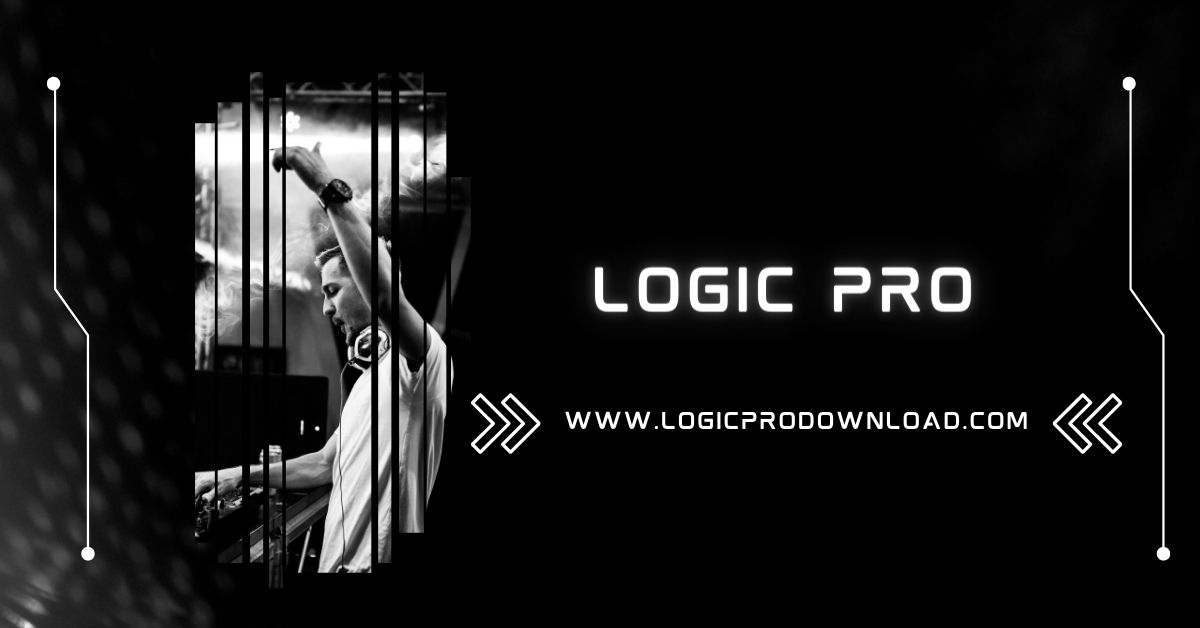Logic Pro is a digital audio workstation (DAW) from Apple. The software was initially designed by German developer C-Lab and later bought by Apple in 2002.
Read More: eudamed services
Garageband to Logic Pro
If you’re a Mac user and have been using Garageband for a while, you may wonder if it’s worth upgrading to Logic Pro. For starters, there are several reasons why you should consider a change.
Firstly, Logic has a powerful mixer and fader. The mixer is a valuable feature for adjusting panning and volume. However, this is only available if you have a license for Logic Pro.Secondly, you’ll enjoy some of the most valuable features Logic offers, including VCA faders and a separate mixer window. This will allow you to take advantage of some advanced mixer features that Garageband doesn’t offer.
Read About: Single Registration Number Services
Finally, you can use various Logic tools to compose your music.
You can use the score editor, change clefs, and add guitar tabs. All this and more is possible with Logic Pro .It’s no secret that Apple’s music team has worked hard to make Logic easier to use. In particular, Logic has a nice set of mouse tools. You can use these tools to move around the interface, flatten sections of your take, and show you the most important things.

One of the most exciting features of Logic is the Flex Time tool. This feature allows you to play with time signatures and tempos without re-recording.There are a lot of other cool features in Logic, too. You can automate a lot of the more mundane tasks in the program. But, it can also be quite cumbersome to do so. Luckily, Logic has a latch feature to help you navigate this process.The logic was once one of the more complex DAWs, but Apple’s musical team has made the program more approachable.
Spatial audio authoring workflow
Logic Pro v10.7 introduces a fully integrated Dolby Atmos workflow. This includes some of the most requested features.Using the Dolby Atmos plugin allows you to control individual channels as well as the overall spatialization of a track. It’s easy to create an immersive audio experience without needing physical hardware.
Spatial mixing is a complex and multi-step process, but it’s possible. In the past, there was a need to use a separate program, like the Dolby Renderer, to achieve this. However, now it’s native to Logic Pro.
Creating an excellent spatial mix is also a matter of optimizing your workflow. For example, using voice, you can set up an in-app sound check file to identify the channels in a surround mix. You can also use a Surround panner to route one or two inputs to 5.1 outputs.
Lastly, if you’re using a surround format that’s not Dolby Atmos, you might be wondering what’s the best way to go about it. Several spatial audio formats exist, including Mach 1, EAR Production Suite, and Sony 360 Reality Audio.
The most impressive of the bunch is the OMF above.
However, exporting an OMF as an AAF can be challenging, as the structure doesn’t support volume information.Similarly, the Logic Pro Spatial Renderer is less robust than some of its rivals. That said, the Logic Pro 10.7 spatial renderer does its job well.
While Logic doesn’t natively support ambisonics, you can still achieve a first-order-like effect with mono and multichannel recordings and 3D panning effects. Lastly, you can import the OMF and AAF formats from a number of other DAWs.
MIDI sequencing capabilities
Logic Pro is a popular digital audio workstation (DAW) with MIDI sequencing capabilities. This powerful tool can play any MIDI clip or chord in increments. In addition, Logic’s session view has a rich toolset and in-depth features for editing.
You can use logic for simple recording, and its suite of MIDI effects is impressive. The program also has a wide range of connectivity.Logic’s MIDI features are simple to use, and the layout is easy to understand. Once you get familiar with Logic’s MIDI toolset, you can perform all kinds of tasks.
You can use the Transposer tool to change the pitch of a MIDI note. Another helpful tool is the Logic Chord Trigger. It is a great way to transform a single MIDI note into a bespoke chord.
Logic’s MIDI environment is different from that of Ableton Live. Unlike Ableton, the MIDI session view in Logic is vertical. That means the arranged idea doesn’t have traditional vertical insert slots. However, this allows you to manipulate the arrangement of your MIDI clips and tracks without the need to switch between the two views.
The MIDI features in Logic are well-rounded, and the toolset is more significant than Ableton Live’s. For example, you can easily assign a MIDI command to a knob or button. You can map these buttons to multiple MIDI FX units.
Logic’s Arpeggiator is a powerful multidimensional tool. Not only does it enable you to control the length of each note, but you can also change the speed at which the re-triggering occurs. With this feature, you can easily create complex rhythms and grooves.Logic’s Randomizer can add variation to your MIDI performance. It is particularly suited to MIDI clips.
6,000 instruments and effect patches
Logic Pro is a professional digital audio workstation from Apple. It includes over 6,000 instruments and effect patches and offers various tools to help you record, playback, and produce your music.
Unlike the stripped-down versions of its progenitors, Logic Pro has plenty of power and features to help you get the job done. It’s compatible with Ableton Live and offers various power-saving features. With nearly 2,000 definable vital commands, you can take full advantage of its advanced editing tools, including a 200-step undo history. You can also set up nested stacks to simplify subdividing group edit tasks.
Depending on the type of track you are working on, the Library will display different patches. These include the Logic Pro-specific patch and the Channel Strip Setting. Patches are stored as a collection of routing information and instrument settings and can consist of multiple channel strips. A channel strip is a series of aux tracks connected through a send.
Logic Pro’s selective patch merging feature allows you to load and use individual components of a patch. This feature is helpful for loading effects and MIDI instruments and is available as part of the gearshift submenu.
Another new option is a “Summing Stack” that you can load into any Logic Project. It’s a complete version of the Channel Strip Setting and can be used for other purposes.
The most obvious is a library of sound effects. For example, you can save an EXS drum kit as a Summing Stack. Using this setting, you can customize independent per-drum filter settings.
The Logic Pro Library contains a range of plug-ins, from stock to the third-party. Some plug-ins have preset folders, while others are located elsewhere on the hard drive.
1,200 sampled instruments and 14,750 Apple Loops
If you are looking for a music production application with an extensive library of sounds, you should check out Logic Pro. It comes with a wide variety of instruments and plugins.Logic Pro includes an extensive collection of modern synthesizers and authentic re-creations of vintage gear. It also supports 32-bit floating point audio files. This lets you import your audio files into Logic without converting them to a different format.
The software has a library of pre recorded musical riffs called Apple Loops. These loops are designed to play in time with your session. They can be edited and used with other Apple Loops or circles in your project.
You can search your library in Logic Pro by clicking on the loops you want to view.
You can sort them by genre, descriptors, or instrument. Each circle in your library has a set of information attached. When you click on a loop, it opens a preview window in sync with the tempo of your project.
Logic Pro supports Ableton Link to synchronize your audio with other MIDI controllers. Individual ports can be configured to have timing offset and plug-in delay compensation.Apple Loops are great for adding a variety of sounds to your project. You can import and use them in other projects or create them from audio recordings. Making them can be very easy.
Logic Pro offers many features, from powerful synthesizers and modern instruments to an extensive collection of effects and plug-ins. For example, you can now use a Pedalboard to stomp on results or play them with a metronome.Logic Pro offers some powerful power-saving features, too. It allows you to prioritize work and save processing power.


